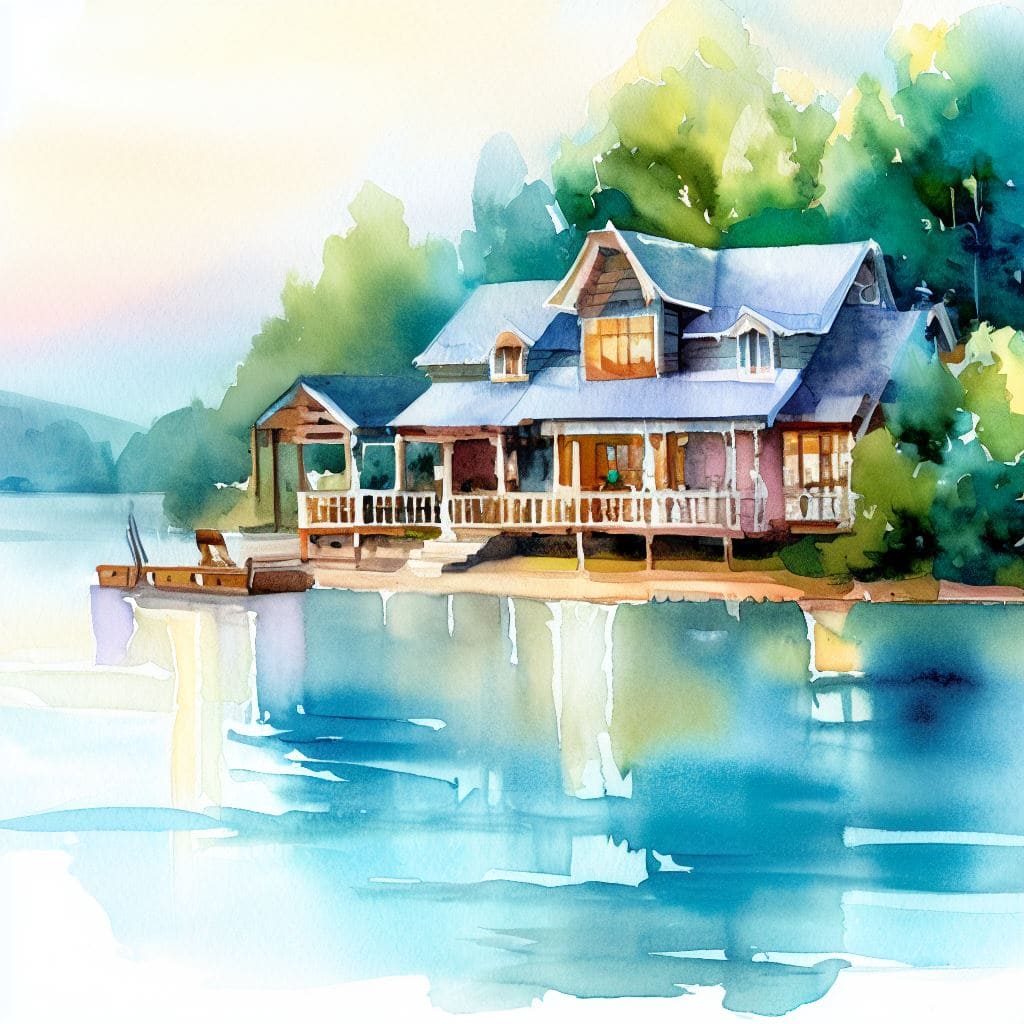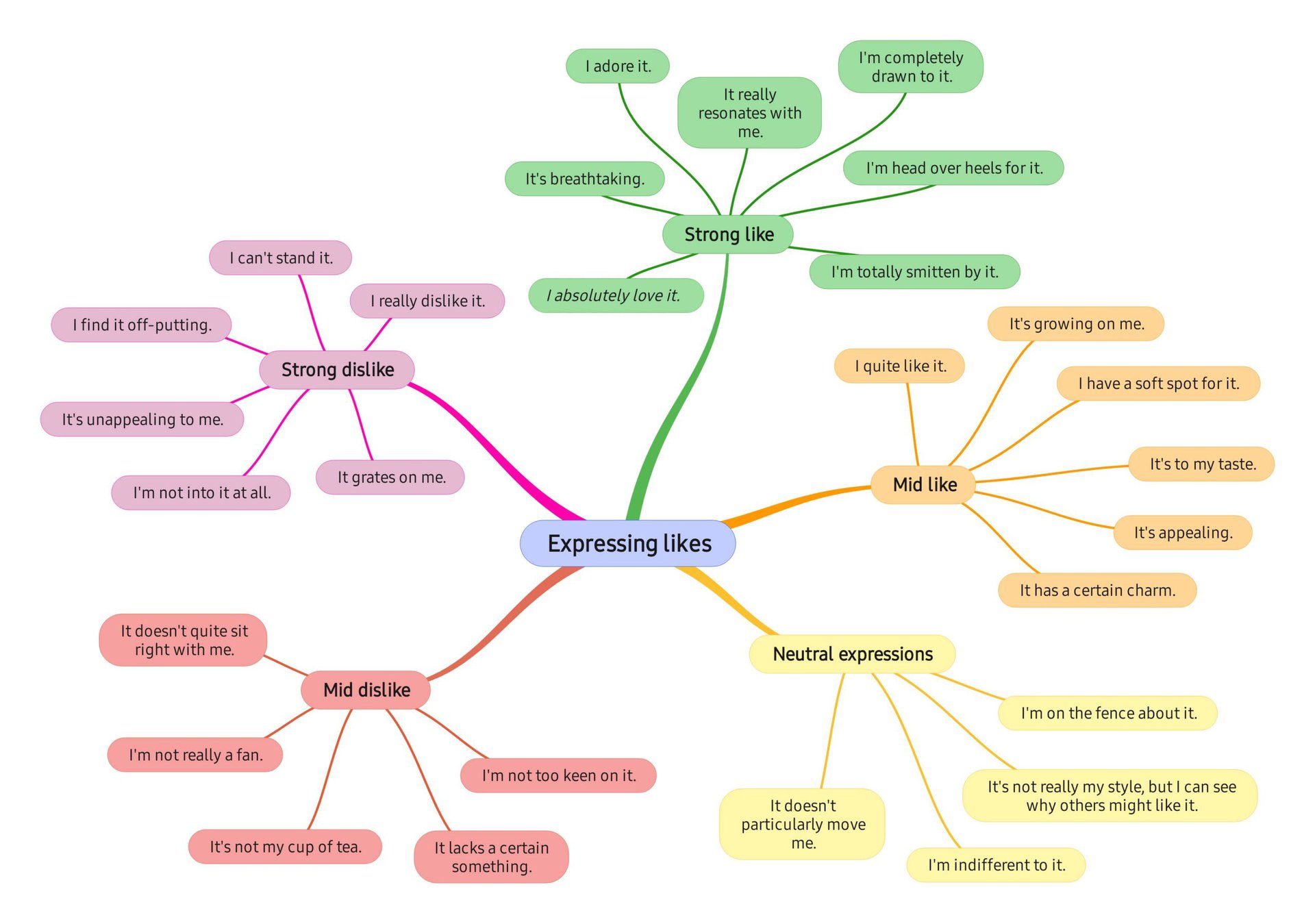
Watercolour art
Bardzo mi przykro, ale lekcje na platformie The Blue Tree działają jedynie na komputerze lub tablecie.
Do zobaczenia na większym ekranie 🙂
Zespół The Blue Tree
back to HOME > General Interest > The Arts >
THE BLUE TREE
The Arts

CEFR B1
Intermediate
warm up
Answer these questions. Listen to Katlego, and African student, talking about his experience. Report back what you heard.
| Do you know how to paint? If not, have you ever considered learning it? | |
| Do you have any paintings in your home? What do they show? If not, why not? | |
| Why do you think some painting fetch some exorbitant prices? Is the high price of art justified? |
key language
LIKE – NEUTRAL – DISLIKE
Do this Multidecker flashcard game. Learn some expressions for talking about likes and dislikes. Make a note of the expressions you would like to remember.
EXPRESSING LIKES – MIND MAP
Study the mind-map with more expressions of likes and dislikes. Cope some of the expressions. You will need them for some other tasks in this lesson.
reading
Getting to know watercolour art and artist
Read this brief information about watercolour and the main artists who created paintings using this method. Did you know about them?
Watercolor is a painting method in which paints are made of pigments 1. suspended in a water-based 2. solution. The paint is often applied to paper, producing transparent and luminous effects.
2. Famous Watercolor Masters:
John James Audubon (1785-1851): An American ornithologist, naturalist, and painter, he’s best known for “The Birds of America,” a book in which he documented and painted every bird species in North America.
William Turner (1775-1851): Often called “the painter of light”, Turner from England was known for his expressive, imaginative landscapes and 3. turbulent, often violent 4.marine paintings.
John Singer Sargent (1856-1925): An American artist, he was considered the “leading portrait painter of his generation.” While known for his oil paintings, his watercolors are masterful, full of light and atmosphere.
Winslow Homer (1836-1910): Another American artist, he started as an illustrator but 5.transitioned to watercolor painting. His works often 6.depicted the sea, fishermen, and other nautical themes.
Georgia O’Keeffe (1887-1986): Known for her large-scale flower paintings, O’Keeffe was an American modernist artist who also created some 7.stunning watercolors early in her career.
3. Characteristics of Watercolor:
Transparency: Unlike oils or acrylics, watercolors are often 8.transparent. This means you can see the layers beneath the top one, giving depth to the painting.
Flow and Bleed: Watercolors have a mind of their own! They flow and blend in unique ways, which is part of the charm.
Lightness: Artists have to think in reverse! In watercolor, you often work from light to dark because it’s hard to cover dark colors with light ones.
4. Cool Facts:
Ancient Art: Watercolor painting dates back to cave paintings. Ancient Egyptians also used a similar technique for their wall paintings.
Portable: Because watercolor paints are lightweight and only require water to activate, they have historically been used by artists outdoors or when traveling.
Versatility: Despite their delicate appearance, watercolors can be 9.vibrant and bold. It’s a very 10.versatile medium.
5. Tips to Start:
Paper Matters: Invest in good quality watercolor paper. It makes a difference!
Experiment: Before diving into a big project, play around. Test how the colors blend, how water affects the flow, and what happens when you layer colors.
Less is More: With watercolor, it’s often better to be reserved than to overwork the paint. Let the water and color interact naturally.
rozpuszczone w
roztwór
gwałtowne, dynamiczne
marynistyczne, morskie
zmienić, przenieść się
przedstawieć (na obrazie)
niezwykle piękne, przepiękne
przeźroczysty
żywy (o kolorze), intensywny
uniwersalny, wszechstronny
TALKING ABOUT ART
Imagine William Turner meeting John Singer Sargent. Here’s a hypothetical conversation these two great watercolour artists might have had.
Study the words from this Quizlet first.
Now, read the dilalogue.
A Quaint Town in Greece: Midday
The narrow cobblestone streets of the town glisten under the brilliance of the sun. White-washed houses with blue shutters contrast beautifully with the azure sky. The town square, filled with the hum of everyday life, has a small pavement cafe where two gentlemen sit, engaged in a deep conversation.
William Turner: You know, John, every time I look at this Grecian light, it reminds me of why I love watercolors so much. The transparency of the medium captures the ephemeral quality of light like no other.
John Singer Sargent: Indeed, William. I’ve always felt that watercolors have a way of conveying the atmosphere of a place, especially when you’re in such a beautifully lit location as this. It’s spontaneous, almost like sketching with colors.
Turner: Ah, the spontaneity! That’s the essence of watercolors, isn’t it? It’s like dancing with nature – the unpredictability, the flow, the blending… there’s a certain freedom to it that’s both challenging and liberating.
Sargent: Precisely. While oils give you control and time, watercolors demand decisiveness. It teaches an artist to observe quickly, understand the subject, and make committed brush strokes. You cannot simply “correct” watercolors; you have to work with your so-called mistakes.
Turner: I’ve always enjoyed that challenge. The way water and pigment react on paper can often lead to delightful accidents, creating effects that one hadn’t even envisioned. And the way it translates light and shadow! It feels like capturing a fleeting moment in time.
Sargent: True, and it’s not just about landscapes or the play of light. The portraits I’ve painted with watercolors have an intimacy to them. They capture the essence of a person in a way that feels fresh and immediate. It’s as if the medium breaks down barriers, allowing one to truly see.
Turner: That’s an interesting perspective on portraits. And while we’re on the subject, I’ve noticed that in your watercolors, you masterfully use the white of the paper. It’s a restraint that many artists find difficult.
Sargent: Thank you, William. Leaving the paper untouched in places allows the light to shine through, providing a luminosity that’s hard to replicate with opaque mediums. And you, my friend, have pushed the boundaries of watercolor to such an extent that many of your pieces feel like they’re brimming with raw emotion. Your works have a dreamlike, ethereal quality that transcends the subject.
Turner: Much appreciated, John. In many ways, watercolor is like life itself – unpredictable, fleeting, and beautiful. You can’t control every aspect of it, but you can immerse yourself in its flow and let it lead you to unexpected places.
Sargent: A poetic thought for a poetic medium. Here’s to watercolors and the magic they bring to our canvas and life.
The two gentlemen raise their coffee cups in a toast, the rich aroma blending seamlessly with their shared appreciation for the art of watercolor. The midday sun casts playful shadows on the ground as life in the quaint Grecian town unfolds around them.
CAN YOU GUESS WHOSE PAINTING THIS IS
Let’s check if you can recognize whose paintings these are. Move your mouse over the image to reveal the name of the artist. How many did you get right?
Practise the language of likes and dislikes on these images.

John Singer Sargent

Georgia O'Keeffe

William Turner

John James Audubon

John Singer Sargent

Georgia O'Keeffe

William Turner

Winslow Homer

John James Audubon

Winslow Homer

John James Audubon

John Singer Sargent
OVER TO YOU
Prepare a prompt for the AI image generating tool. Include as much information as possible. Use the tool to generate your image. Are you satisfied with the result?
POLL
Cast your vote in the poll below.





COMMENTS
Share your views and opinions here.